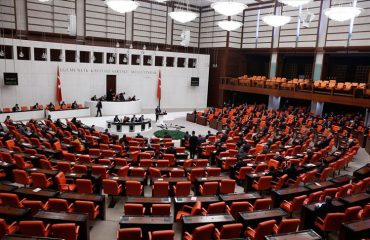

The Turkish Central Bank’s interest rate hike today was in line with expectations following the clear signals from the government. The Bank increased the one-week repo rate, known as the policy rate, by 475 basis points to 15{4a62a0b61d095f9fa64ff0aeb2e5f07472fcd403e64dbe9b2a0b309ae33c1dfd} from 10.25{4a62a0b61d095f9fa64ff0aeb2e5f07472fcd403e64dbe9b2a0b309ae33c1dfd}.
The decision was the official declaration of a departure from the low interest rate-strong Turkish Lira policy, which has been pushed for a long time.
Similar to the rest of the world, the Central Bank aimed to keep interest rates low in a bid to support the economy during the pandemic. However, the fragility that we inherited from the pre-pandemic period limited Turkey from implementing low interest rate policies indefinitely. In particular, the fact that the Turkish economy entered this period with a high inflation rate accelerated dollarization and capital outflows following successive rate cuts. The Central Bank tried to defend the value of the Lira by selling foreign currency reserves until August 2020. After that date, the lira was defended through direct or implicit interest rate hikes. Still, the tension between the government and the Central Bank over low interest rates prevented a strong and committed rate hike to defend the lira.
The policy shift that was triggered by the replacement of the Central Bank governor and the Treasury and Finance Minister posts was finalized into a concrete step with the massive interest rate hike today. Although it is a key turning point, I do not think that this decision is a permanent step towards Central Bank’s independence. I rather interpret this step as the government’s blessing for a rate hike to prevent a financial crisis. Despite this short term focus, monetary policy decisions had diverged from the economic fundamentals for such a long time that markets perceived this reluctant permission rather positively.
The course of monetary policy ahead of us will probably be high interest rate policy until financial stability is achieved and subsequent rate cuts, as we experienced during the 2018 crisis. Unfortunately, impatience in policy easing in the absence of a permanent decline in inflation expectations would not be sufficient to achieve price stability. Rate cuts that come prematurely before a decline in inflation trend trigger dollarization and capital outflows, pushing us back to square one, as we experienced before.
What needs to be done is to focus on price stability and reduce inflation expectations permanently, instead of short-term fixes to save the day. This approach would re-establish confidence and prepare a suitable environment for investment.
The drop in long-term bond yields since the last week, despite the expectation of a sizable interest rate hike exactly points to this mechanism. Markets are not hesitant in awarding positive policies when they see steps that are consistent with the basic economic principles. When the proper policy actions are taken, the resulting decline in the risk premium and inflation expectations reduce market interest rates and increase the value of the lira. So, a tighter policy action ends up supporting economic growth. At this stage, it is critical to maintain this hawkish stance and signal a permanent change in attitude that will prioritize price stability. If this can be done, then a rapid recovery can be achieved similar to the period after the 2001 crisis.
Interest rate hike and price stability
For a permanent change of attitude to achieve price stability, the government must first be convinced that tight monetary policy reduces inflation and not vice versa.
President Erdoğan’s recent remarks reflect that the government’s opinion on this issue has not changed. Unfortunately, this means that tight monetary policy will be perceived as a trigger rather than the cure for inflation. That is why I think the current rate hike is tightening with a short term focus to prevent a financial crisis rather than a long-term step toward price stability.

